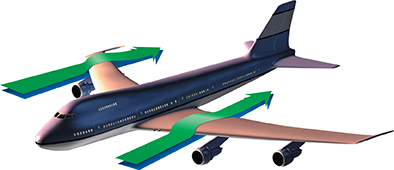Figure 8 The airplane wing changes the flow pattern of the air it passes through. Note how air flowing over the top of the wing is diverted up and over the wing's curved surface.
Comparing and Contrasting How does the flow of air over the top of the wing (green arrows) compare with the flow of air under the wing (blue arrows)?

Bernoulli's Principle
Try this simple experiment. Pick up a single sheet of paper and hold its top corners using both of your hands. Now position the paper directly in front of your mouth and blow as hard as you can over the top surface of the paper. Even though you are blowing over its top, the far end of the paper lifts upward.
The Swiss scientist Daniel Bernoulli (1700–1782) discovered the reason why the sheet of paper behaves as it does.  According to Bernoulli's principle, as the speed of a fluid increases, the pressure within the fluid decreases. As the air blows across the top of the paper, the pressure exerted by the air decreases. Because the air below the paper is nearly motionless, it exerts a greater pressure. The difference in pressure forces the paper upward.
According to Bernoulli's principle, as the speed of a fluid increases, the pressure within the fluid decreases. As the air blows across the top of the paper, the pressure exerted by the air decreases. Because the air below the paper is nearly motionless, it exerts a greater pressure. The difference in pressure forces the paper upward.
Bernoulli's principle explains the table tennis ball demonstration discussed earlier. The air from the dryer strikes the bottom of the ball and lifts it into the air. The pressure in this fast-moving air stream, however, is less than the pressure in the surrounding air. If the ball moves sideways out of the air stream, it encounters higher-pressure, slower-moving air. The higher-pressure air forces the ball back into the air stream coming from the hair dryer.
Bernoulli's principle has many applications in industry and explains many things in nature as well.

How is a fluid's speed related to the pressure it exerts?
Wings and Lift
The ability of birds and airplanes to fly is largely explained by Bernoulli's principle. As shown in Figure 8, the air traveling over the top of an airplane wing moves faster than the air passing underneath. This creates a low-pressure area above the wing. The pressure difference between the top and the bottom of the wing creates an upward force known as lift. The lift created in this way is a large part of what keeps the airplane aloft.





